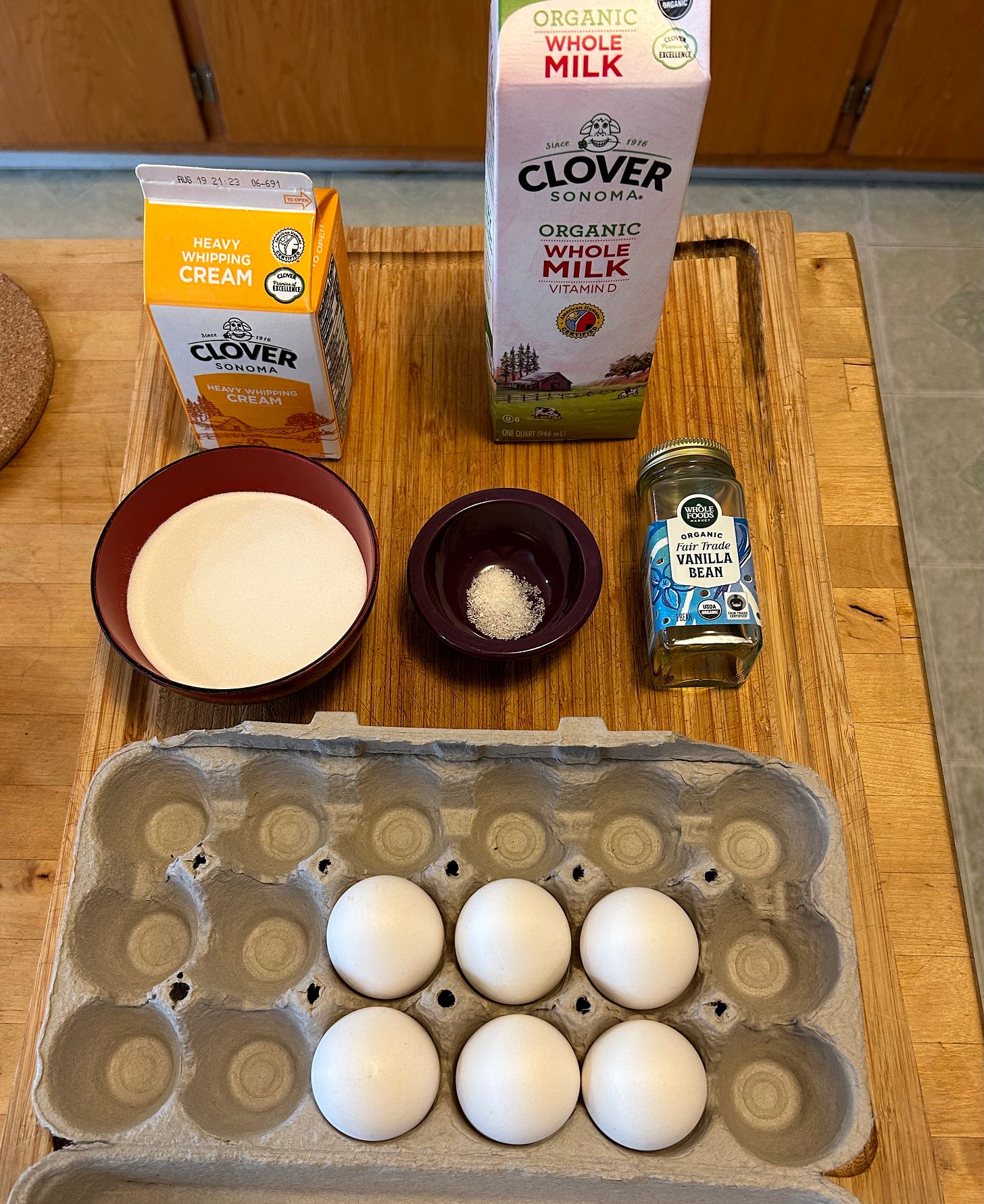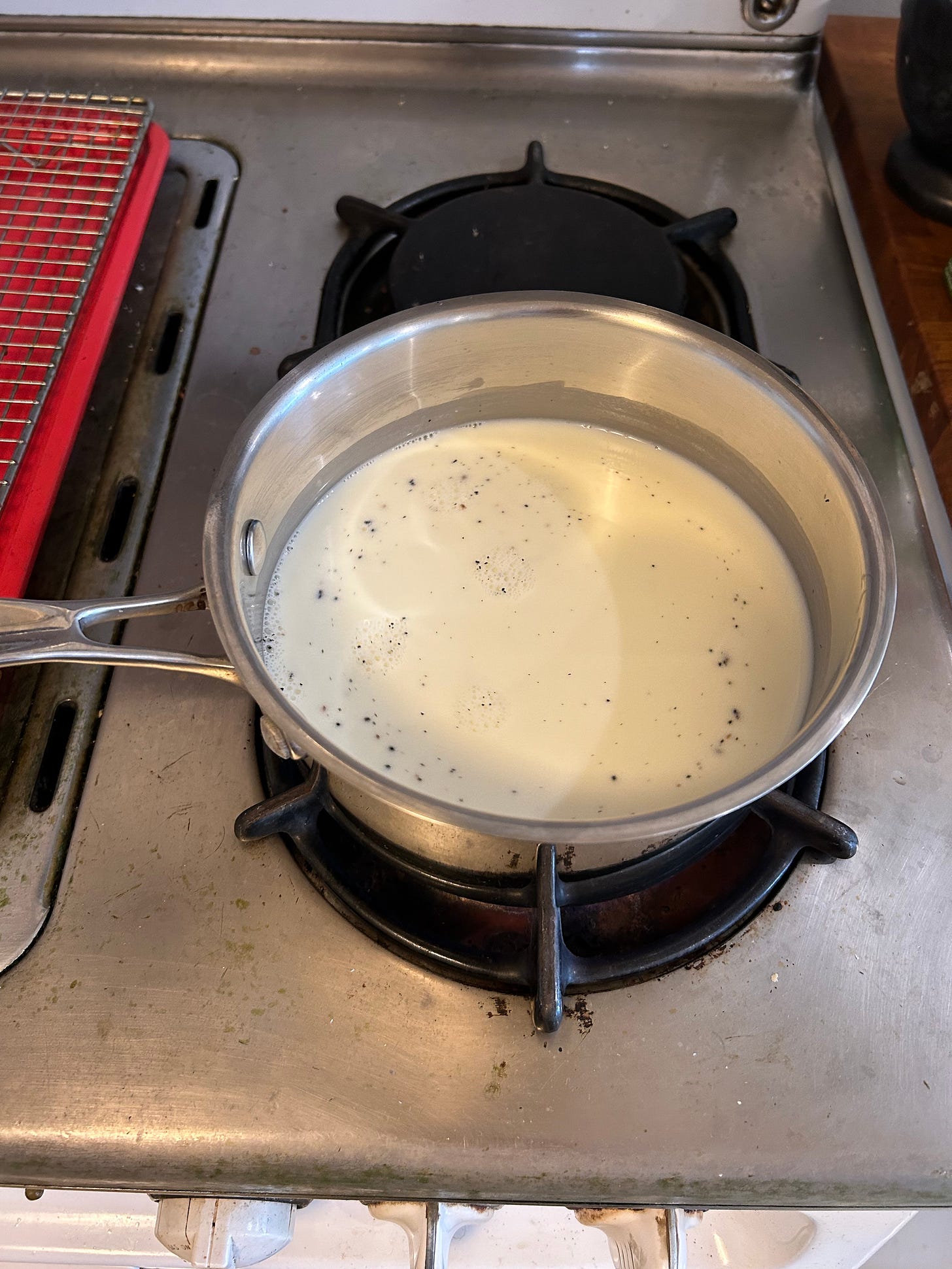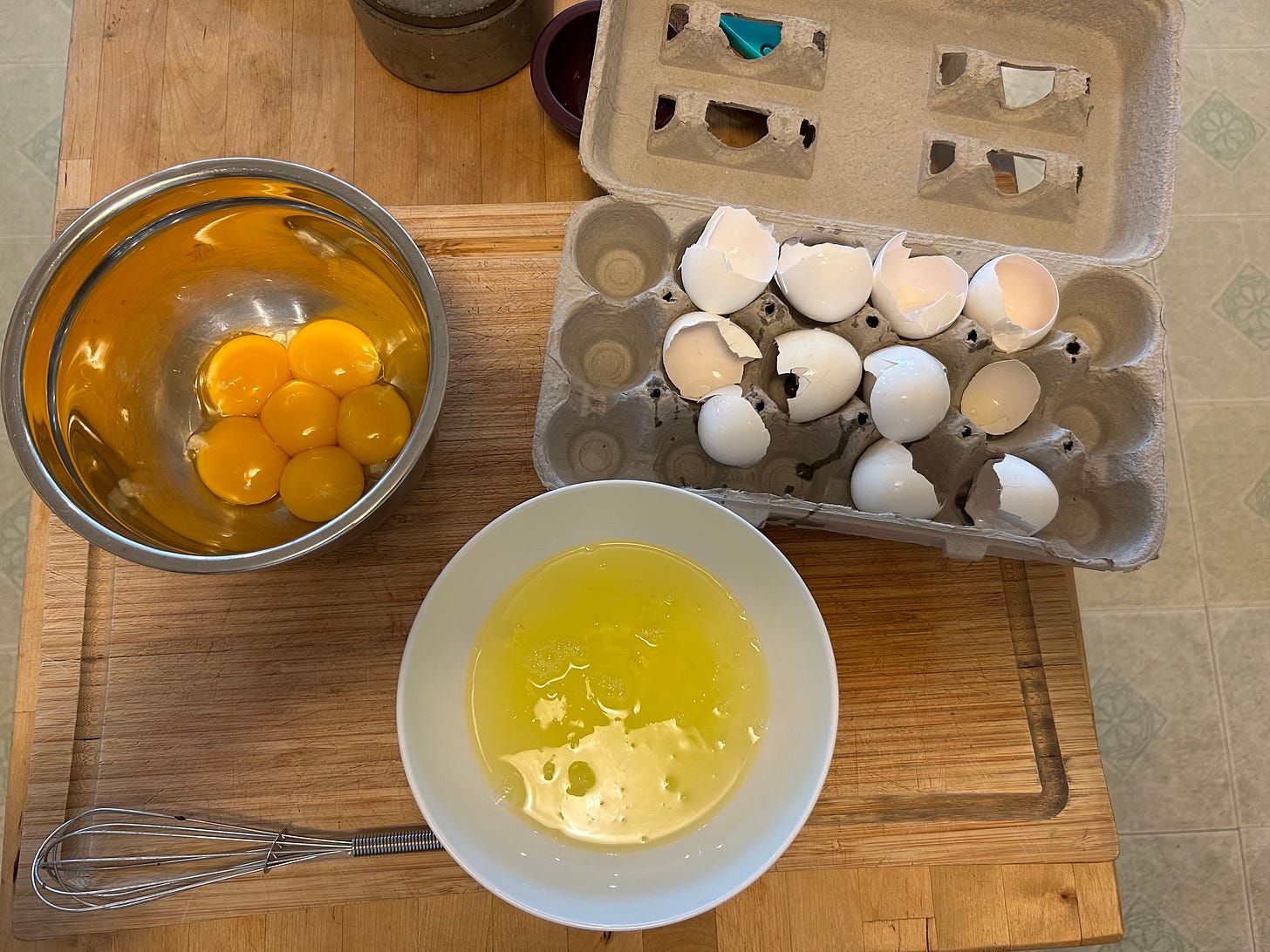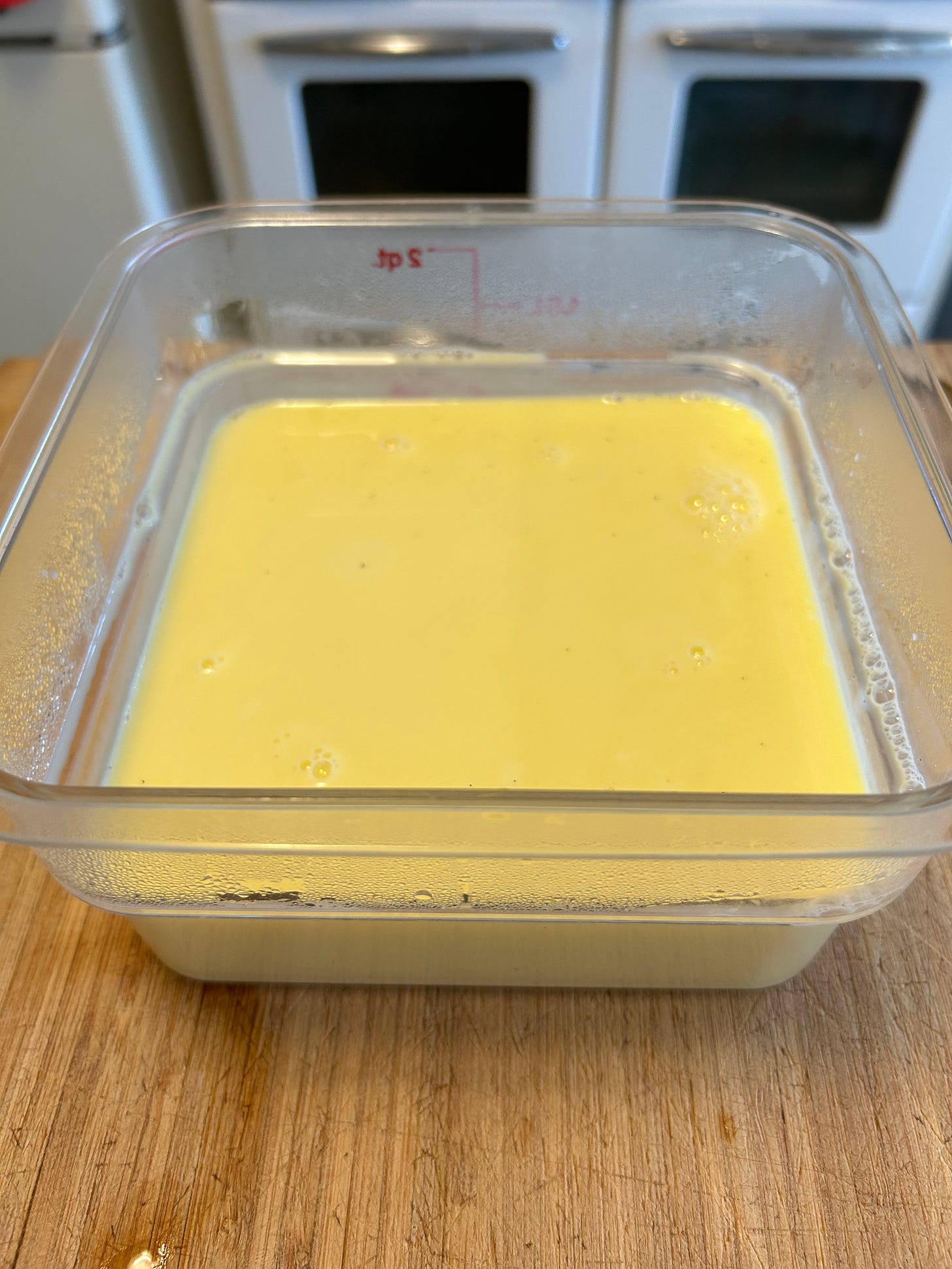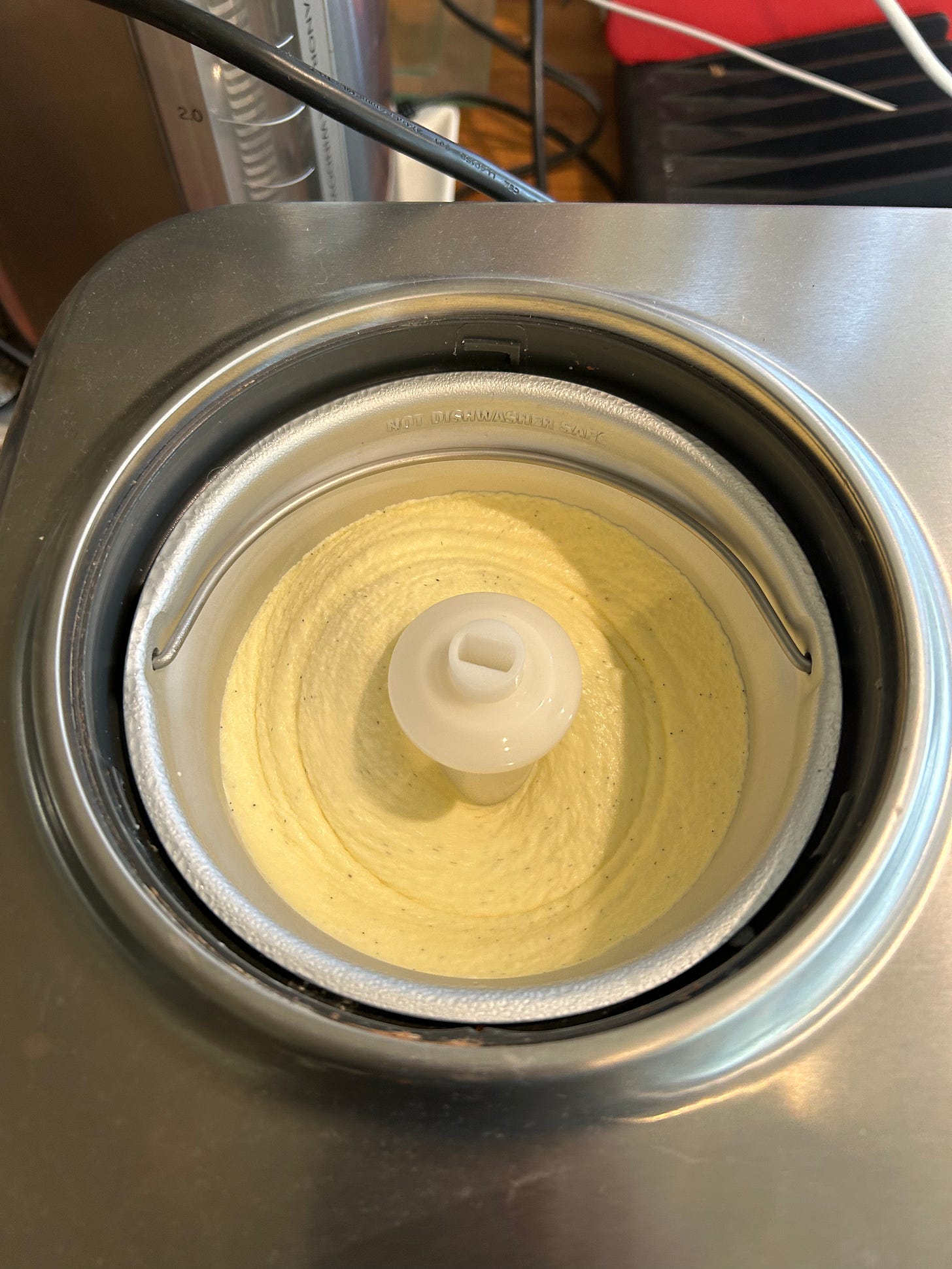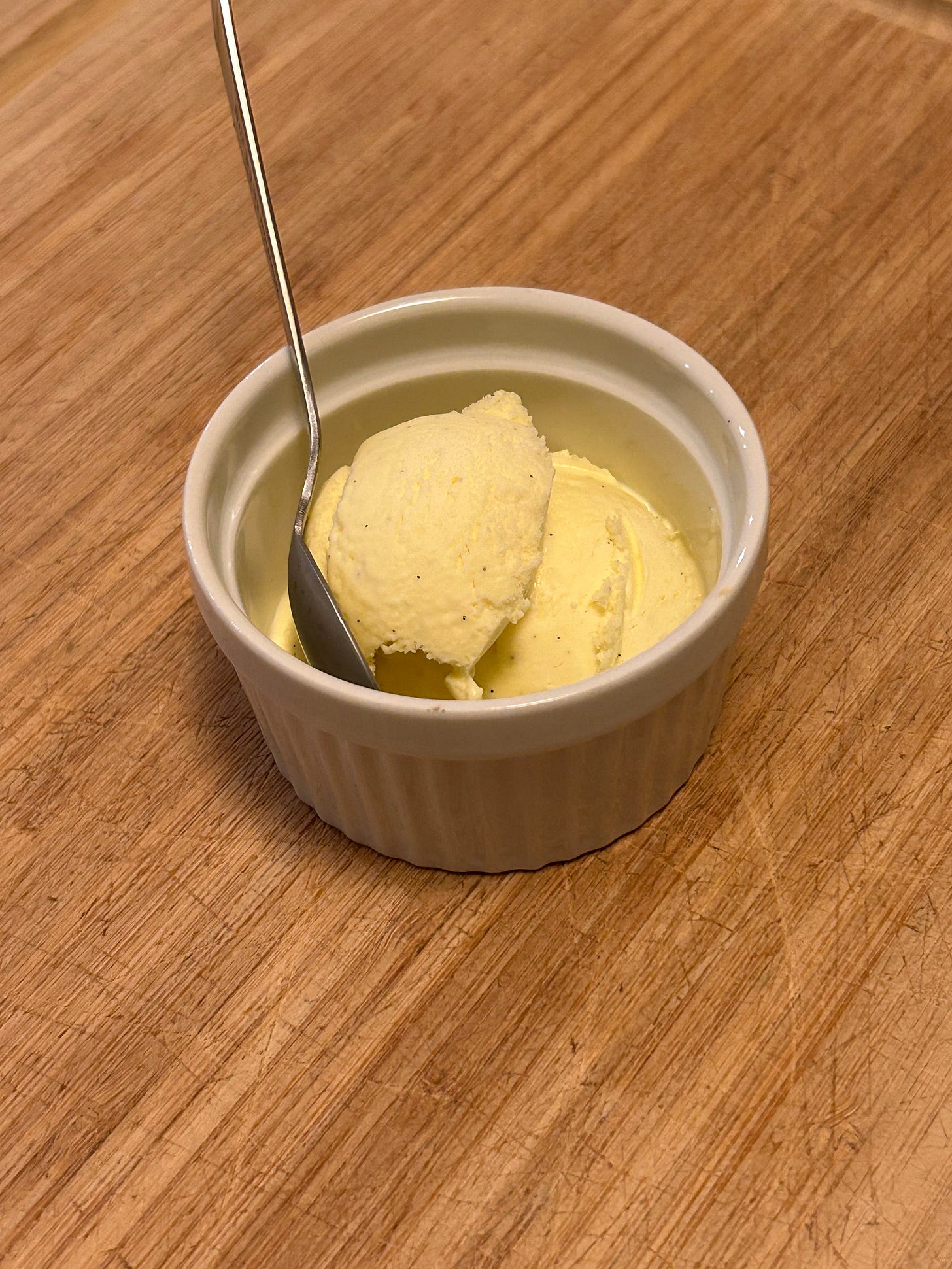Recipe Test: Melissa Clark's The Only Ice Cream Recipe You'll Ever Need (Vanilla)
The recipe GOAT's take on how to make ice cream.
Melissa Clark is a national treasure. When it comes to deliciousness and ease, no recipe writer is nearly as prolific or as dependable as Melissa Clark. She may well be the best recipe writer in America. She’s certainly the best one working at the NY Times (I mean David Tanis and Yotam Ottolenghi? Please.1) In my view, she is hands down the best in the business.
I’ve cooked dozens of her dinner recipes over the years—sheet pan meals, instant pot meals, pan-fried meals, salad-based meals, etc.—and each one has been a winner. I’ve also done a few of her baked desserts from time to time. But it’s mostly been her savory repertoire.
Nevertheless, when I decided to kick things off on this blog with a French-style frozen custard, it was hard to resist turning to Melissa. And when I saw that she calls her recipe, “The Only Ice Cream Recipe You’ll Ever Need”, it just seemed like the ideal place to get started.
And so we begin this ice cream journey with a traditional French custard, made Vanilla style. As I mentioned in the inaugural post, the first few weeks will be devoted to testing 3 to 4 different vanilla recipes in the hopes of setting a baseline for evaluating a few different standard ice cream-bases.2 I chose vanilla because it is such a common, staple flavor that it seemed like the best starting point from which to get things started. And now onto the recipe!
The defining feature of a frozen custard is the use of egg yolks. Melissa’s recipe calls for six egg yolks, but you can find other recipes that call for only five, or even four depending on other ingredients or stabilizers.
Whatever the amount, the yolks, when tempered and then cooked while being kept in constant motion, act as a kind of thickening agent for the ice cream, making it rich, creamy, and scoopable. While the consistency of frozen custard is wonderful, I find making it to be a real pain in the rear. It’s the constant stirring that gets me. Once you get started with the yolks, you’re pretty much rooted in place in front of the stovetop. And with one hand having to remain in constant motion, it means you’re unable to tend to other tasks related to the recipe. This requires a lot of planning/prep in advance—like having an ice bath ready to stop the custard from cooking, for example—which, sadly, ain’t my strong suit.
On top of these physical limitations, I always worry that I’m going to overcook the eggs, scrambling them instead of producing a silky smooth custard. This has never actually happened to me in my many experiences making custard. Yet I still worry about it all the same. I guess what I’m trying to say is that making custards is not a chill experience. It’s very demanding and precise.
But, enough complaining! Here are the ingredients I used:
As you can see, it’s pretty simple: milk, cream, sugar, eggs, salt, and a vanilla bean. You start by combining everything except the eggs and heating it on the stove.
Then you temper the yolks and then combine the tempered yolks with the full mix and cook it until it’s thickened.
After cooking the custard to the desired consistency, I cooled the pot in cold water in the sink (because I predictably forgot to prepare an ice bath!). Then I stored it in the fridge overnight to marinate.
I’m using a Breville Smart Scoop to churn, and it works pretty well. But I’m thinking about trying out a different machine soon. My issue with the Breville is that when I churn the batter (whether custard or otherwise) small amounts at the bottom of the bucket tend to get overly thick and gummy. That never used to happen when I used freeze-bowl ice cream makers. As a result, I’ve contemplated getting a different machine; I’ve considered this Whynter one and this one from Lello. And no lie, at some point before I die, I may purchase this one.
But these are pipe dreams! As those links demonstrate, compressor-based ice cream makers are very pricey. So I’m just blowing smoke here. Anyway, back to the matter at hand. Here’s how it turned out:
The Verdict
The finished product did not disappoint: rich, creamy, and most of all, super vanilla-y. Store-bought ice cream just cannot match the intensity of the vanilla flavor you get when using a fresh vanilla bean in homemade ice cream. Everyone in the family enjoyed it. Kids ate it plain, while my wife and I ate it with a berry crisp she made the day before. Delicious both ways!
It’s another home run for Melissa the GOAT! This may not be the only ice cream recipe that you need, but it certainly could be: the recipe gives you a creamy and delicious-tasting base that is versatile and can be made into any number of flavors.
Before wrapping up this post, I should mention I didn’t find the custard to have an off-putting eggy taste. It just tasted like good ol’ ice cream to me! But according to Jeni Britton Bauer of Jeni’s Ice Cream, the eggs take away from the purity of the flavor, which is why her recipe doesn’t use egg yolks. We’ll see if she’s right when we try out Jeni’s recipe next week!
See you then!
Some of the other NY Times food writers are solid, like Ali Slagle and Kay Chun. Some of them are even good—like J. Kenji, whose recipes are excellent, despite suffering from an annoying food science-fussiness. But they ain’t Melissa.
Next week I’m going to make Jeni’s recipe, and the week after that, I’m going to try either Alton Brown’s or Max Falkowitz’s Philly-style ice cream recipe. From there I plan to branch out in all manner of directions, from sorbets and vegan ice creams to different flavors of custard and Philly-style ice creams.





